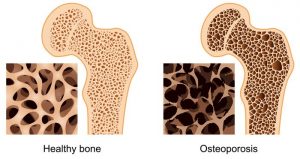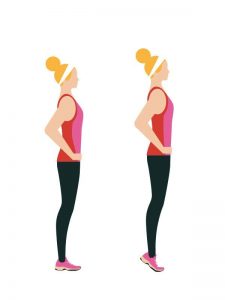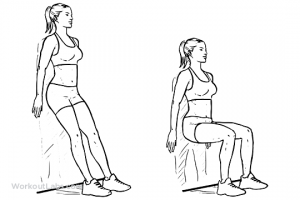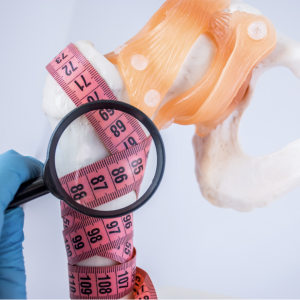Bones – they make up the framework and foundation of our bodies! We know about keeping our organs healthy and our muscles strong, but we often forget about our bones! Most of the time, loss of bone density is silent. It takes an accident, such as a fall or other form of trauma, for an individual to get tested for loss of bone density.
Loss of bone density is called osteoporosis. This condition is diagnosed through a bone mineral density test. Your GP and endocrinologist will work together to diagnose and manage this condition.
Osteoporosis generally affects women around menopausal age; however it can affect younger women and also men. It can develop for many reasons, including diet and gut issues, cancers and the drugs needed to treat them, hormonal changes and some blood disorders.

The good news is, there are ways for individuals with osteoporosis to slow down their bone loss and even induce strong bone growth!
Healthy bone vs. osteoporotic bone
Healthy bone has a hard external layer – the compact bone – and a spongy inner matrix. When a bone becomes osteoporotic, the very small holes and gaps found in healthy spongy matrix become large. This means that if the bone were to experience trauma, such as a fall or other hard impact, it will be less able to withstand force and prone to fracture or break more easily.
What can be done?
Exercise
Exercise which involves loading the bone has been shown to help bone growth. There are a few ways this can be done. Resistance training is highly effective for bone growth – when the muscles are in use, the tendons pull on the bone where they are attached. This encourages new bone to form! Additionally, impact exercises are also effective, as they jolt the bones. The impact during these movements will also encourage the stronger bone to grow. Plenty of research shows that when these movements are done safely, as prescribed by an Accredited Exercise Physiologist in accordance with your other health conditions, they are incredibly effective. Exercise also has the benefit of having little to NO side effects – negative ones that is!
Medication
There are a few specific medications that you might be prescribed by your GP or endocrinologist, depending on the severity of your osteoporosis and any other medications you may be taking. Two of the more popular ones we see are Aclasta and Prolia. These are in the form of injections and are given every 6-12 months. They are very effective, especially when used along with regular resistance training and other weight-bearing exercise.
You can also continue taking your over-the-counter supplements, such as Calcium and Vitamin D tablets.
Diet and digestive health
Some bowel conditions can be associated with the development of osteoporosis. If your gut does not absorb enough nutrients from your food, this may lead to osteoporosis. Adding in more calcium, from both dairy and non-dairy sources, as well as fruit, vegetables and fish can be used to supplement exercise and medication.
Additionally, it is a good idea to see a gastroenterologist to see if there are any issues concerning malabsorption in your gut, ensuring you target any digestive concerns at the root.
What exercises can I do?
We have a few go-to exercises which we love for bone density! Note: these exercises may not be appropriate for you. You may want to discuss with your GP and endocrinologist about your bone density and consult with an Accredited Exercise Physiologist before commencing a strength-based
exercise program.

Calf raises to heel drops
These are an easy, effective exercise to deliver impact to your bones, and no equipment is needed!
- Lift up onto your toes, holding onto a wall or chair for support if needed
- Allow your heels to drop back onto the ground, feeling the hard sensation as you drop down
- You may like to modify how hard or gentle you drop down as this can be hard on the lower back
Wall squat
Squatting with bone loss is completely safe. However, if you are nervous, this is a great alternative which is also easy on the knees!
- Place your back against a sturdy wall
- Walk your feet away from the wall, around 30-50cm away (the further away, the lower you can squat and the harder the movement will be)
- Bend at your knees and slide down the wall, keeping your weight in your heels
- Hold this position for 10+ seconds
If you feel this in your knees, slide up the wall a fraction to make sure your knees don’t jut out past your toes.
![]() Core Lean back
Core Lean back![]()
When dealing with bone loss, you want to be careful about twisting about the spine. This is a great core exercise you can do while making sure you keep your back straight.
- Sit on the edge of a chair or on the ground if you are comfortable to do so
- Sit up tall, making sure your spine doesn’t collapse into a ‘C’ shape
- Engage your core by gently drawing your belly button to your spine and drawing your pelvic floor up
- Lean back at the hips, as if you are opening the pages of a book
- Hold for 3+ seconds then slowly return
You will feel this movement in your deep abdominals!

